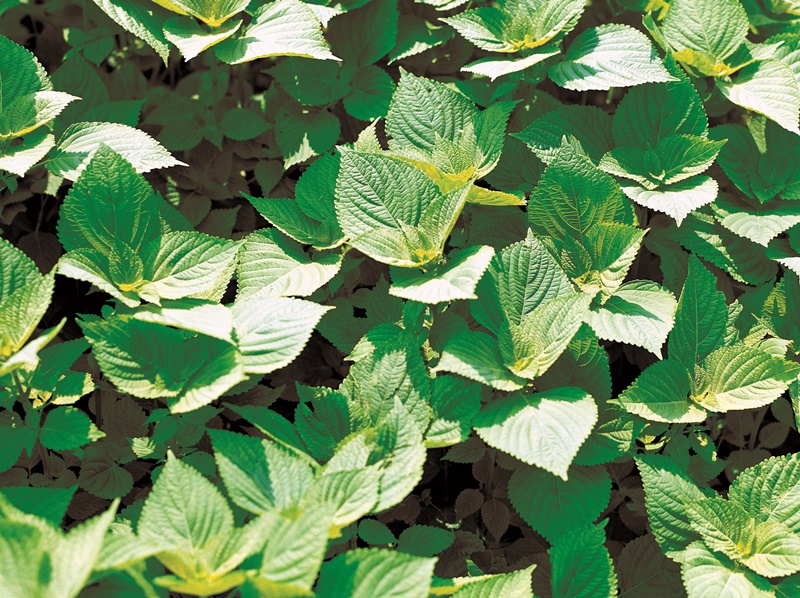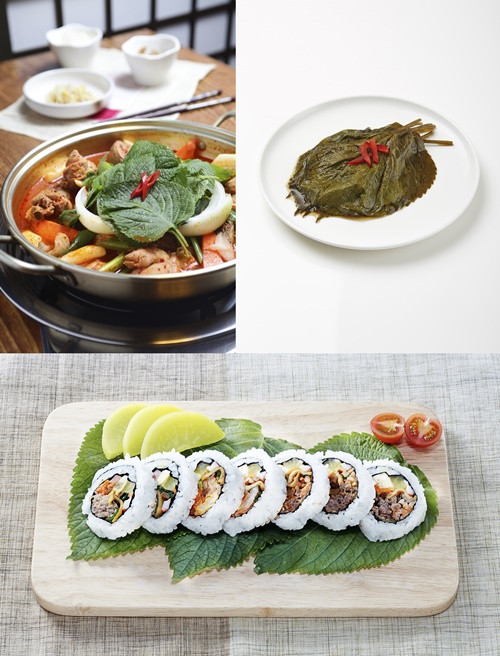
Though kkaennip (perilla leaves) are cultivated throughout Asia including in Korea, India and China, Korea is the only country to use the leaves as seasoned vegetables and spices in boiled stews and soups and side dishes.
By Oh Hyun Woo and Kim Minji
Photos = iclickart
"I ordered a kettle of makgeolli (raw rice wine) at a stand-up bar in Jjaeboseonchang, a port in Gunsan, and was given sliced raw pomfret as an appetizer.
As I wrapped it with kkaennip (perilla leaves), the madam came running to me and said, 'You have to flip over the leaves and wrap the raw fish. Then savoring the food becomes much smoother.'"
These lines are from the poem "Sliced raw pomfret and kkaennip" by poet Ahn Do-hyun.
Kkaennip is a classic Korean side dish that is a must when eating meat and raw fish dishes. The vegetable is a leading condiment in Korea, just like coriander in China and the shiso leaf in Japan. The taste might not be a hit right away with foreign diners but the leaves exude a leading traditional scent and flavor of the country.
The first record of cultivating kkaennip was found in Nongsa Jikseol (Straight Talk on Farming), a book written in 1429 during the reign of King Sejong the Great. Such leaves are widely cultivated in Asian countries including India, Korea and China, but Korea is the only country that cooks them in various ways.
The leaves' strong pungent odor hardly gives them universal appeal but the peril ketone, which creates the odor, acts as a preservative and is said to prevent food poisoning and stimulate mental concentration by stimulating the olfactory nerve in the brain.
The pungent taste of the perilla leaves has earned the vegetable the nickname "the best medicine on the dining table" because of their abundant nutrients.
Sixteenth-century Joseon Dynasty physician Heo Jun, who wrote the leading medical textbook of his era Dongui Bogam (Treasured Mirror of Eastern Medicine), wrote, "By adjusting gastrointestinal functions and with a pungent taste, warming nature and no toxicity, kkaennip relaxes muscles and stops cough and thirst."
The leaves help kill odors of fish or meat and are commonly used when making seasoned vegetables and boiling soups as side dishes, and also comprise the main ingredients of select side dishes. Pickled kkaennip in soy sauce mixed with vinegar and plum juice and brine-pickled kkaennip with seasoning are popular side dishes in Korea.
Rice cakes made with such leaves are delicacies in the Hamgyeong-do provinces in present-day North Korea; they are made by steaming kneaded, circled and flat flour with hot water.
So try kkaennip as an appetizer and ingredient for both taste and health, especially in Korea's hot summer.

Kkaennip's ability to get rid of strong odors is why it is used as spices for seasoned vegetables and soups, as well as the main ingredients of side dishes.
hyunw54@korea.kr